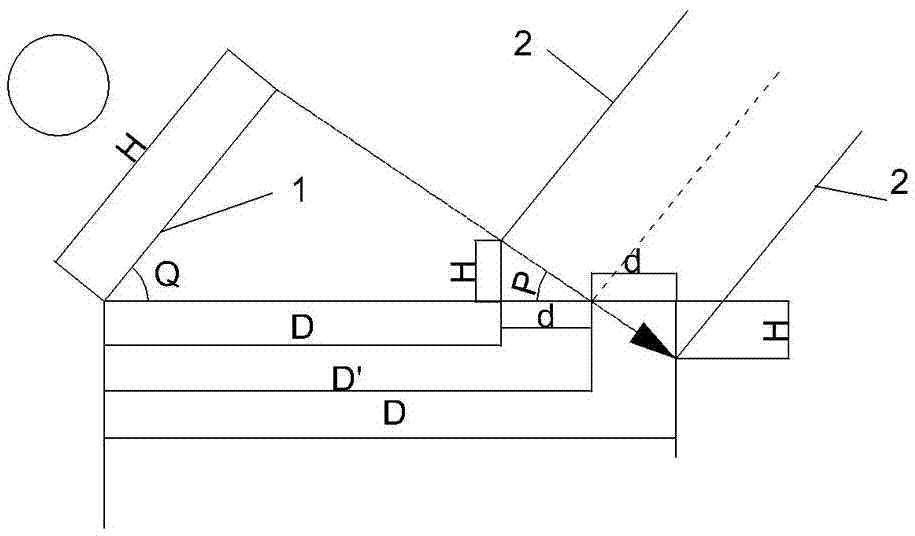Different terrain-adaptive solar tracking method
A solar tracking and self-adaptive technology, applied in the direction of using feedback control, etc., can solve the problem of not guaranteeing that photovoltaic modules are not blocked by shadows, and the shadows of front and rear photovoltaic modules can be blocked. The algorithm formula is simple and clear, and the reliability and stability are guaranteed. Effect
- Summary
- Abstract
- Description
- Claims
- Application Information
AI Technical Summary
Problems solved by technology
Method used
Image
Examples
Embodiment
[0034] Such as figure 1 with 2 As shown, different terrain adaptive solar tracking methods, the first step, according to the longitude γ and latitude of the installation place of the solar panel assembly And Beijing time T, calculate the local time t, show the hour angle ω and the declination angle δ of time change; Wherein, t=T-[(120-γ) / 15], ω=(t-12)×15, δ =23.45 sin[360×(284+n) / 365]; second step, calculate the tangent value of P angle according to the tangent value of the sun altitude h and the sine value of the sun azimuth α, tanP=tanh / sin α, P The angle is the angle between a vector perpendicular to the panel and the horizontal plane obtained by projecting the space vector of the sun's rays onto the tracker panel assembly; the calculation formula of the P angle is:
[0035]
[0036]
[0037] tanP = tanh / sinα;
[0038] The third step is to calculate the normal tracking target angle Q of the tracking system according to the tangent value of the P angle obtained in ...
PUM
 Login to View More
Login to View More Abstract
Description
Claims
Application Information
 Login to View More
Login to View More - R&D
- Intellectual Property
- Life Sciences
- Materials
- Tech Scout
- Unparalleled Data Quality
- Higher Quality Content
- 60% Fewer Hallucinations
Browse by: Latest US Patents, China's latest patents, Technical Efficacy Thesaurus, Application Domain, Technology Topic, Popular Technical Reports.
© 2025 PatSnap. All rights reserved.Legal|Privacy policy|Modern Slavery Act Transparency Statement|Sitemap|About US| Contact US: help@patsnap.com



